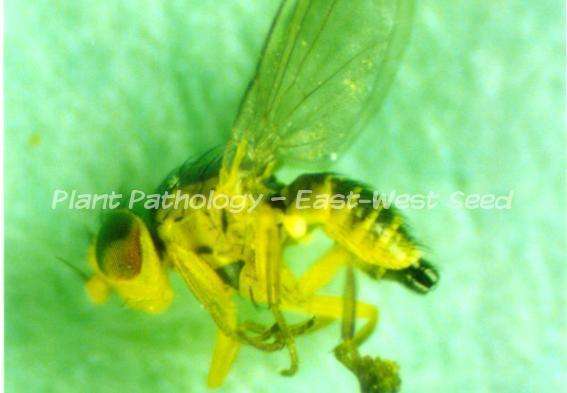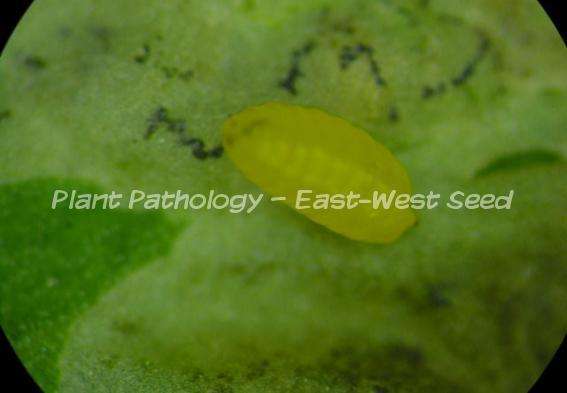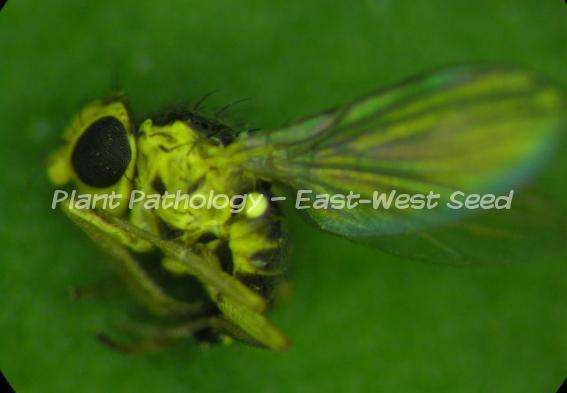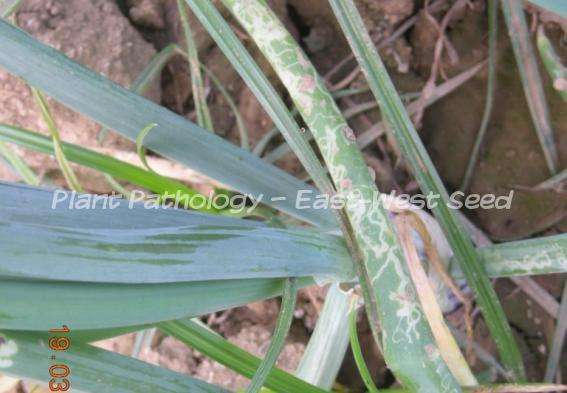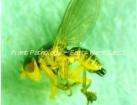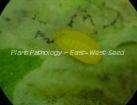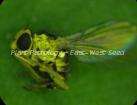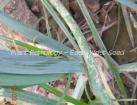| Common Species: | |
 |
Liriomyza trifolii (Burgees, 1880) |
| Common Name: | |
 |
American serpentine leafminer |
 |
Serpentine leaf miner |
 |
Chrysanthemum leaf miner |
 |
American clover miner |
 |
Gram pod borer |
| Damaging Stage: | |
 |
Larvae
|
| Crops Afected: | |
 |
Cucurbits, solanaceous, legumes, brassicas, onion
|
| Characteristics Damage: | |
 |
Larval feeding causes characteristic tunnels/ irregular mining patterns that enlarge as the larvae mature.
|
 |
Mining reduces the photosynthetic capacity of the leaves. |
 |
Severe mining causes premature dropping of leaves. |
| Control and Management: | |
 |
Monitor the area regularly.
|
 |
Use yellow sticky traps to reduce adult leaf miner. |
 |
Remove and dispose properly heavily infested leaves. |
 |
Cultivate the soil by plowing and harrowing and use plastic mulch to minimize pupation in the soil. |
 |
Use of natural enemies like parasitic wasps from the families Braconidae, Eulophidae, and Pteromalidae can keep leaf miner population below economic threshold level. |
 |
Apply insecticides like buprofesin (e.g. Applaud®), profenofos (e.g. Selecron®) and cyromazine (e.g. Trigard®) when necessary. |
| References: | |
|
http://www.cabi.org/isc/datasheet/30965 http://entnemdept.ufl.edu/creatures/veg/leaf/a_serpentine_leafminer.htm |
|



